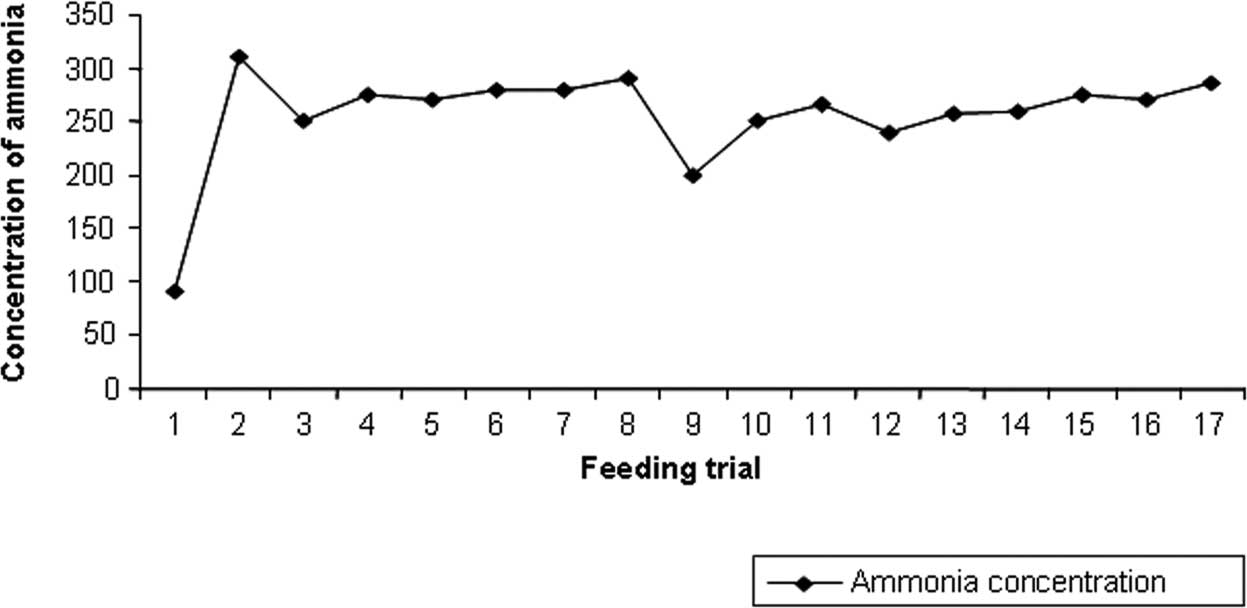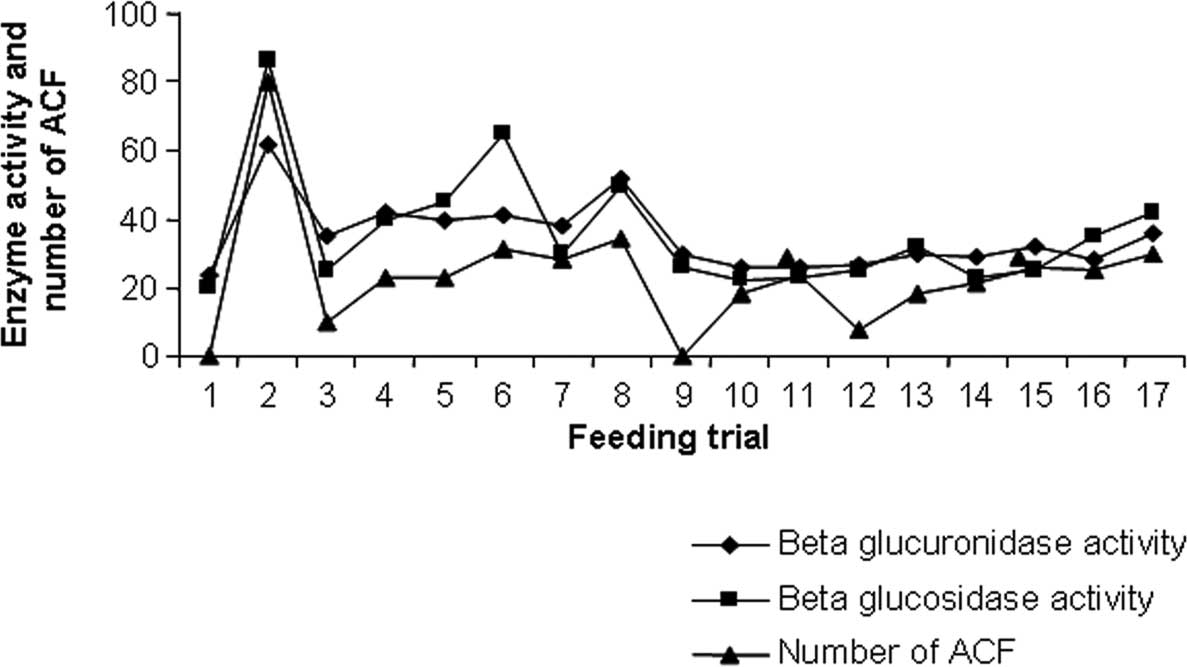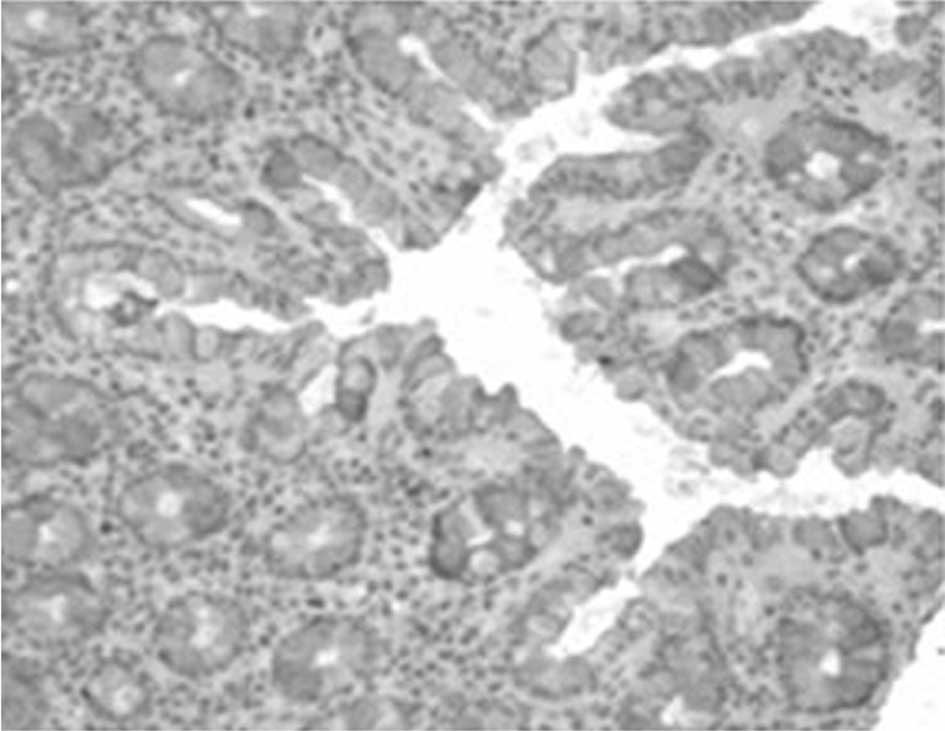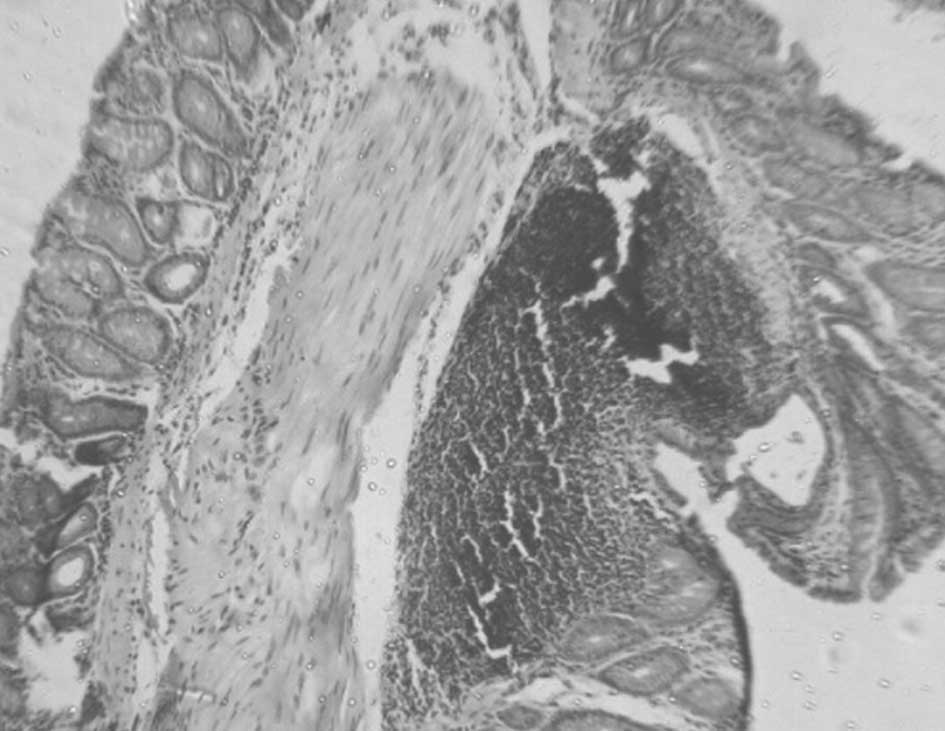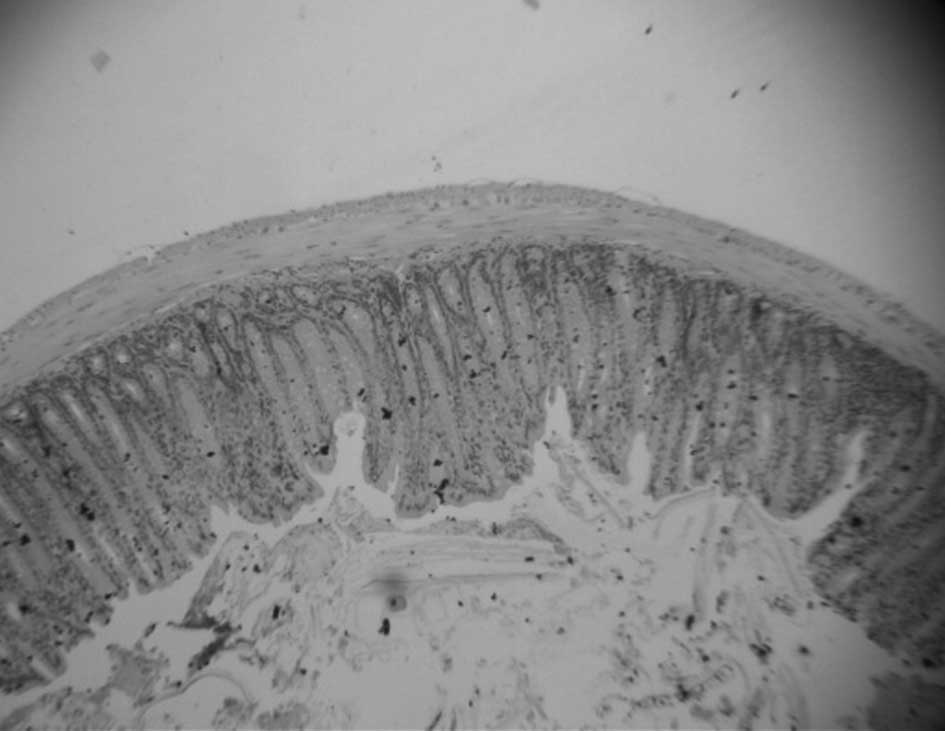|
1.
|
Jacela JY, DeRouchey JM, Tokach MD, et al:
Feed additives for Swine: fact sheets – prebiotics and probiotics,
and phytogenetics. J Swine Health Prod. 18:132–136. 2010.
|
|
2.
|
Tomasik PJ and Tomasik P: Probiotics and
prebiotics. Cereal Chem. 80:113–117. 2003. View Article : Google Scholar
|
|
3.
|
Vanderhoof JA: Probiotics: future
directions. Am J Clin Nutr. 73:1152–1155. 2001.PubMed/NCBI
|
|
4.
|
Harish K and Varghese T: Probiotics in
humans – evidence based review. Calicut Med J. 4:211–223. 2006.
|
|
5.
|
Jiang T and Savaiano DA: In vitro lactose
fermentation by human colonic bacteria is modified by
Lactobacillus acidophilus supplementation. J Nutr.
127:1489–1495. 1997.PubMed/NCBI
|
|
6.
|
Rafter J: Lactic acid bacteria and cancer:
mechanistic perspective. Br J Nutr. 88:89–94. 2002. View Article : Google Scholar : PubMed/NCBI
|
|
7.
|
Brady LJ, Gallaher DD and Busta FF: The
role of probiotic cultures in the prevention of colon cancer. J
Nutr. 130:410–414. 2000.PubMed/NCBI
|
|
8.
|
Panda AK, Reddy MR, Rao RSV, et al:
Production performance, serum/yolk cholesterol and immune
competence of white leghorn layers as influenced by dietary
supplementation with probiotic. Trop Anim Health Prod. 35:85–94.
2003. View Article : Google Scholar : PubMed/NCBI
|
|
9.
|
Angelakis E and Raoult D: The increase of
Lactobacillus species in the gut flora of new born broiler
chicks and ducks is associated with weight gain. PLoS One. 5:1–5.
2010.
|
|
10.
|
Mahony LO, Feeney M, Halloran SO, et al:
Probiotic impact on microbial flora, inflammation and tumour
development in IL-10 knockout mice. Aliment Pharmacol Ther.
15:1219–1225. 2001. View Article : Google Scholar : PubMed/NCBI
|
|
11.
|
Femia AP, Luceri C, Dolara P, et al:
Antitumorigenic activity of the prebiotic inulin enriched with
oligofructose in combination with the probiotic Lactobacillus
rhamnosus and Bifidobacterium lactis on
azoxymethane-induced colon carcinogenesis in rats. Carcinogenesis.
23:1953–1960. 2002. View Article : Google Scholar : PubMed/NCBI
|
|
12.
|
Wollowski I, Rechkemmer G and Pool-Zobel
BL: Protective role of probiotics and prebiotics in colon cancer.
Am J Clin Nutr. 73:451–455. 2001.PubMed/NCBI
|
|
13.
|
Jung JJ, Jeung HC, Lee JO, et al: Putative
chemosensitive genes in colorectal cancer cell lines for anticancer
agents. Oncol Rep. 18:593–599. 2007.PubMed/NCBI
|
|
14.
|
Garodia P, Ichikawa H, Malani N, et al:
From ancient medicine to modern medicine: ayurvedic concepts of
health and their role in inflammation and cancer. J Soc Integr
Oncol. 5:1–14. 2007. View Article : Google Scholar : PubMed/NCBI
|
|
15.
|
Nayak BS and Pereira LMP: Catharanthus
roseus flower extract has wound healing activity in Sprague
Dawley rats. BMC Complement Altern Med. 6:1–6. 2006. View Article : Google Scholar
|
|
16.
|
Junior AAP, Teles BCV, Castro EFB, et al:
Vincristine delays gastric emptying and gastro intestinal transit
of liquids in awake rats. Braz J Med Biol Res. 42:567–573. 2009.
View Article : Google Scholar : PubMed/NCBI
|
|
17.
|
Sawada N, Kataoka K, Kondo K, et al:
Betulinic acid augments the inhibitory effects of vincristine on
growth and lung metastasis of B16F10 melanoma cells in mice. Br J
Cancer. 90:1672–1678. 2004. View Article : Google Scholar : PubMed/NCBI
|
|
18.
|
Thompson J, George EO, Poquette CA, et al:
Synergy of topotecan in combination with vincristine for treatment
of pediatric solid tumor xenografts. Clin Cancer Res. 5:3617–3631.
1999.PubMed/NCBI
|
|
19.
|
Asha, Gayathri D and Batish V: Molecular
characterization and variation of Lactobacillus sp. of
remote malnad regions of Karnataka, India. Adv Environ Bio.
6:481–486. 2012.
|
|
20.
|
Rowland IR, Rumney CJ, Coutts JT, et al:
Effect of Bifidobacterium longum and inulin on gut bacterial
metabolism and carcinogen-induced aberrant crypt foci in rats.
Carcinogenesis. 19:281–285. 1998.
|
|
21.
|
Strompfova V, Marcinakova M, Gancarcikova
S, et al: New probiotic strain Lactobacillus fermentum AD1
and its effect in Japanese quail. Vet Med Czech. 50:415–420.
2005.
|















